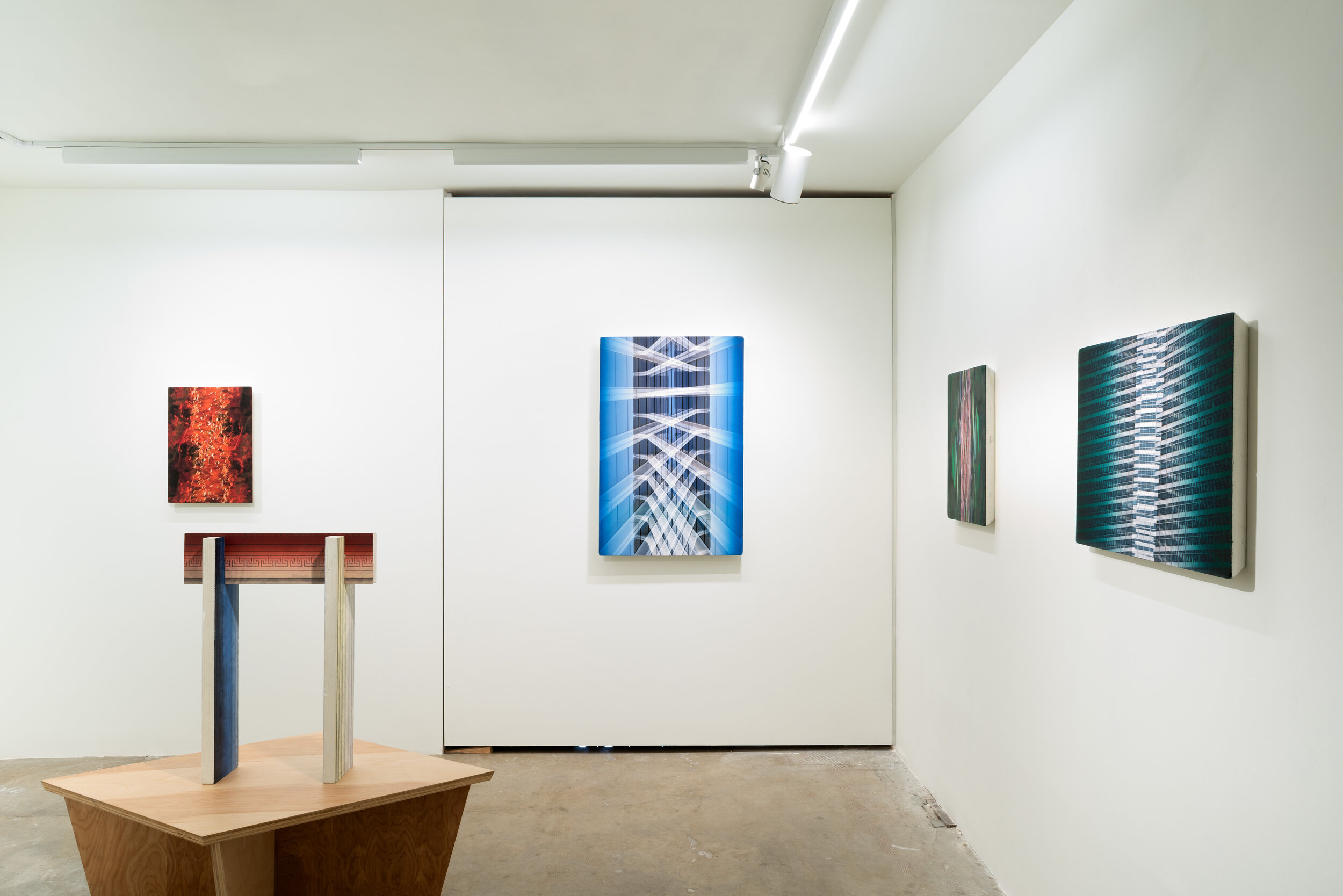Adam Moskowitz
out of gamut
Viewing Room | March 27 - May 8, 2021


press release
Moskowitz Bayse is pleased to present Out of Gamut, an exhibition of new wall and sculptural works by Adam Moskowitz, the artist’s second solo presentation with the gallery. The pieces will be installed in our Viewing Room from March 27 – May 8, 2021.
Working reflexively across photography, sculpture, and painting, and thinking fluidly between principles of architecture and music, the artist’s recent works build upon existing strategies while introducing new material and processes into his practice. Adapting compositional structures from music as a basis for lyrically geometric abstractions, the artist continues his probing of form as language expressed distinctly across media.
For the works in Out of Gamut, Moskowitz applies sweeping oil paint gradients to poured concrete panels, then uses an ultraviolet printer to overlay photographic double exposures of architectural details and natural elements–rocks and plants, among them. The resulting lattices become sonorous echoes of form and light; hovering concrete illuminations of inner-outer pulses felt but rarely seen. His objects suggest lurking interconnectivities, quietly exposing rhythms shared by the human-made and natural worlds.
The artist turns to the luminosity and chromatic spectrum inherent to oil paint as a means of expanding the dynamic range of the photographic image; he introduces colors unavailable through traditional printing methods, and is able to direct light and shadow from beneath the image. Here, the oil layer functions like an underpainting while referencing techniques long inherent to photography, beginning with hand-colouring photographs as early as the mid-19th century; the painting activates the picture’s surface from microns beneath, pushing through the semi-translucent printed image and interrupting its inked sheen with uncannily matte textures. The painted and printed layers settle into one another, generating sinking dark passages whose optical weight belies the objects’ solidity. Floating on their beveled concrete substrates, the artist’s images become physically charged as they project into the viewer’s space.
Fascinated by Classical principles of architecture and strategies due to their immense but often overlooked bearing on contemporary life, Moskowitz turns to concrete as both subject and material. Concrete was instrumental in the development of Roman civilization, freeing architects and engineers from the limiting factors of brick and stone construction methods. Today, concrete serves as both a ubiquitous and unassuming building material, and a critical demarcator of civilization as distinct from wilderness. Elegant in its chemical and practical simplicity, concrete facilitates and signifies society’s gloriously fraught, sometimes clumsily realized progression from dirt roads and crude shelters to skyscrapers and superhighways. This use of concrete retools post-minimalist strategies that leverage the poetic possibilities of industrial materials, although toward an altogether different end.
The artist’s use of concrete, crucially, remains fundamentally consistent with its industrial application. The concrete plays from the pocket, a hearty and quietly elegant support, on top of which the image sits; surface binds with substrate, using it much as humans do. In preserving its utilitarian identity, Moskowitz preserves the innate and immutable dignity of the material, in keeping with both its history as well as its present importance to civilization. In the same motion, he positions the image as inextricably bound to its materiality, existing at once outside and because of its quantifiable solidity. The object itself, then, becomes whole in hermetic interdependence. Discrete players cooperate and support one another–like a building, a forest, or an orchestra.
download pdf

